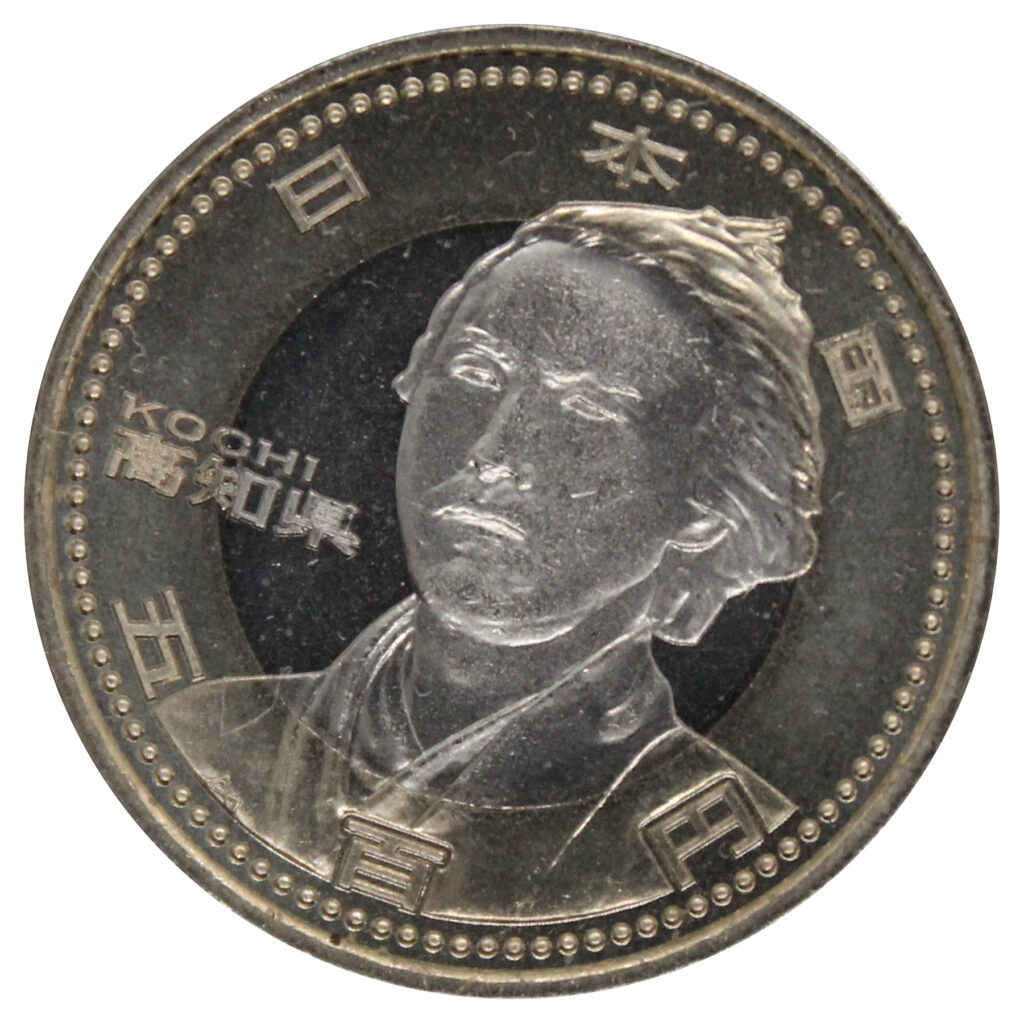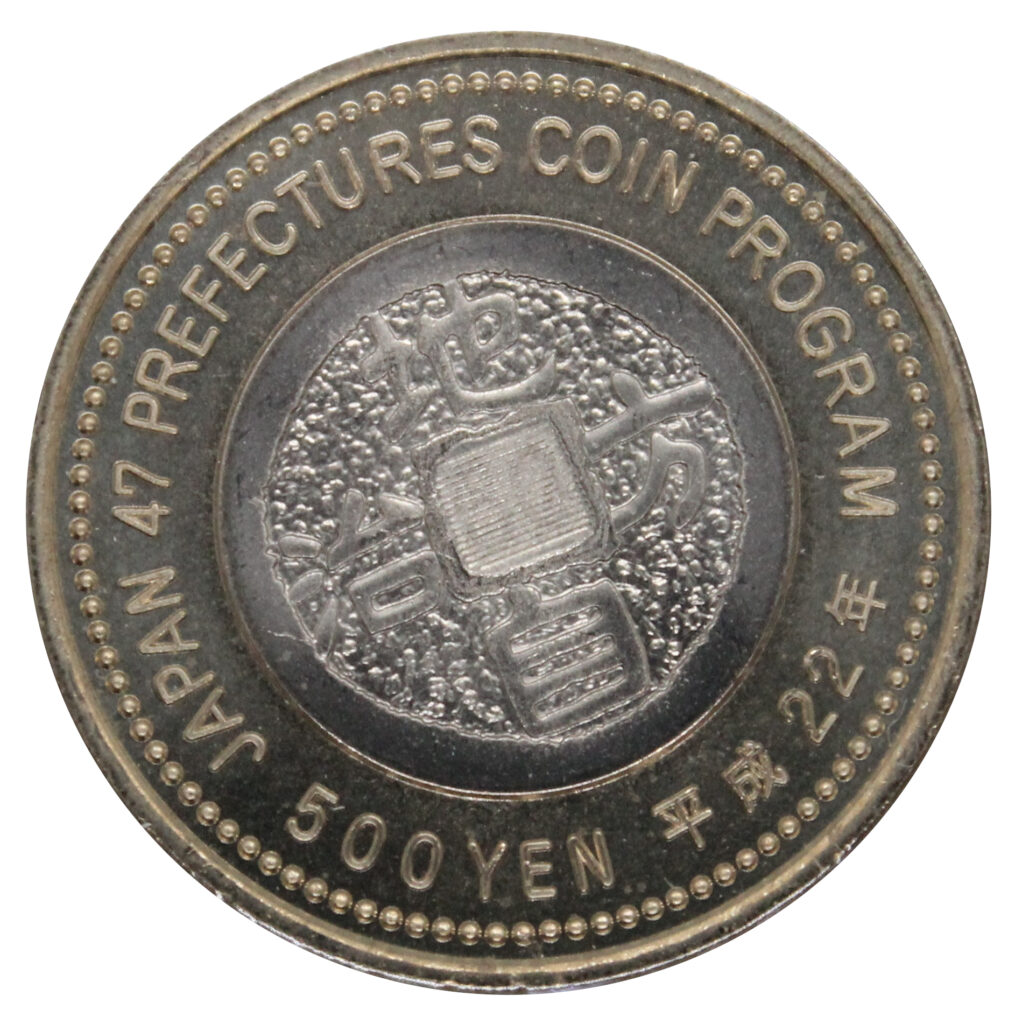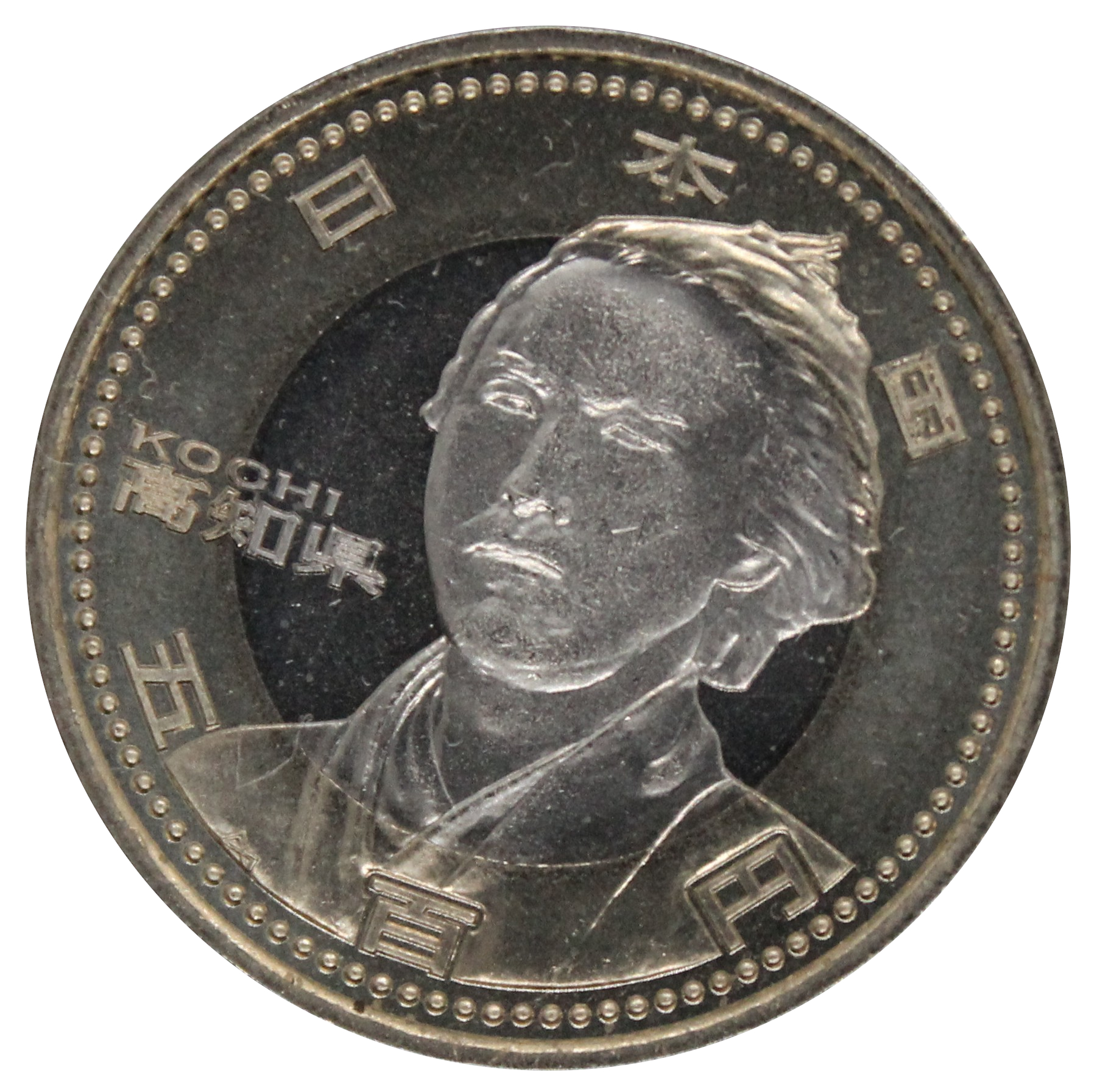

| Material | Nickel-brass, Cupronickel and Copper |
| Composition | Copper 750 Zinc 125 Nickel 125 |
| Weight | 7.1g |
| Diameter | 26.5mm |
| Year of Production | 2010 |
A 500 yen coin made to commemorate the 60th anniversary of the enforcement of the Local Autonomy Law.
There are 47 types, the same as the number of prefectures in Japan.
It is made by combining two technologies: “Cladd,” in which another type of metal plate is inserted between two metal plates, and “Bicolor,” in which another metal is placed in a disk. “Baikara Clad
There are jagged edges on the sides, and only four places are shaped differently from the rest.
The reverse side is the same.
The design imitates the coins of the Edo period.
It is written in kanji as “local Autonomy” in four characters.
The year and “JAPAN 47PREFECTURES COIN PROGRAM” are engraved.
The photo shows a coin from Kochi Prefecture.
It depicts Sakamoto Ryoma, a great man from Kochi Prefecture.
He was a key figure in the revolution that occurred at the end of the Edo period.
Sakamoto Ryoma was a Samurai at the end of the Tokugawa Shogunate. The end of the Shogunate was the end of the Edo period.
Sakamoto was a low-ranking samurai from the Tosa Domain on Shikoku and became an active opponent of the Tokugawa Shogunate after the end of Japan’s sakoku isolationist policy.
Under the alias Saitani Umetarō he worked against the Bakufu, the government of the Tokugawa shogunate, and was often hunted by their supporters and the Shinsengumi. Sakamoto advocated for democracy, Japanese nationalism, return of power to the Imperial Court, abolition of feudalism, and moderate modernization and industrialization of Japan. Sakamoto successfully negotiated the Satchō Alliance between the powerful rival Chōshū and Satsuma domains and united them against the Bakufu. Sakamoto was assassinated in December 1867 with his companion Nakaoka Shintarō, shortly before the Boshin War and the Meiji Restoration.


